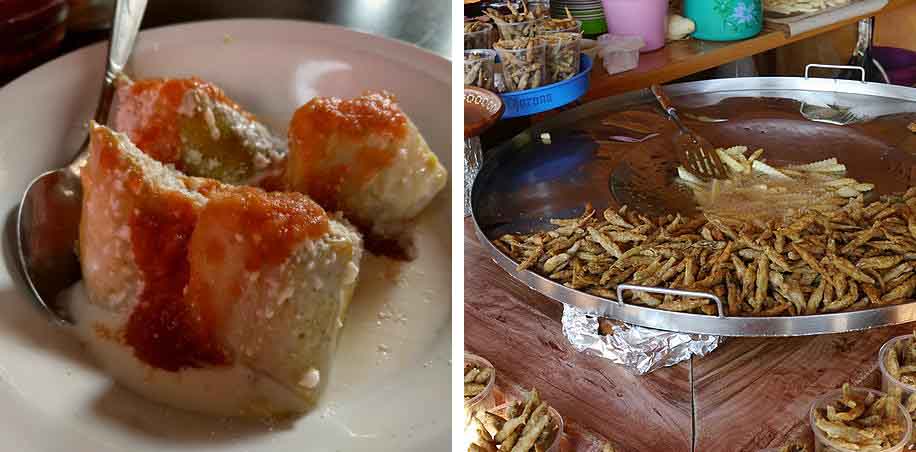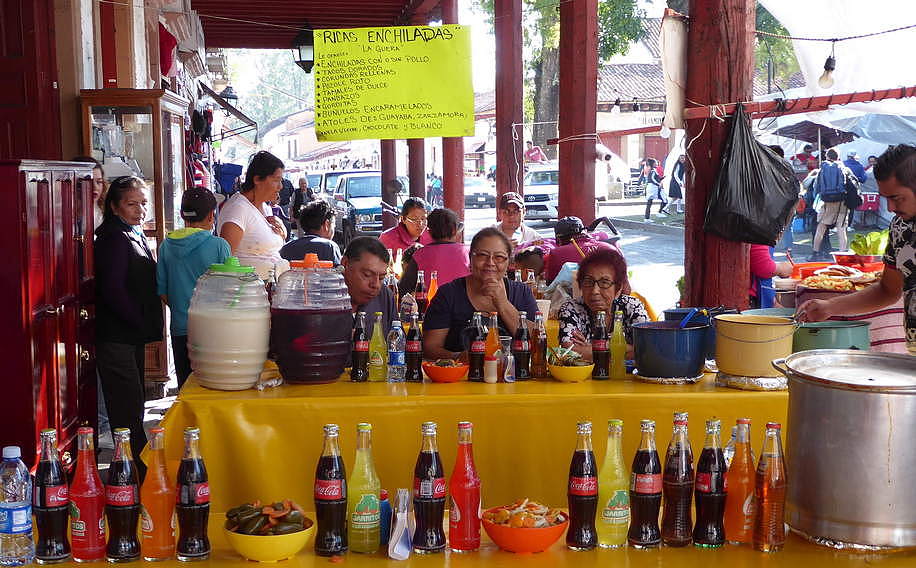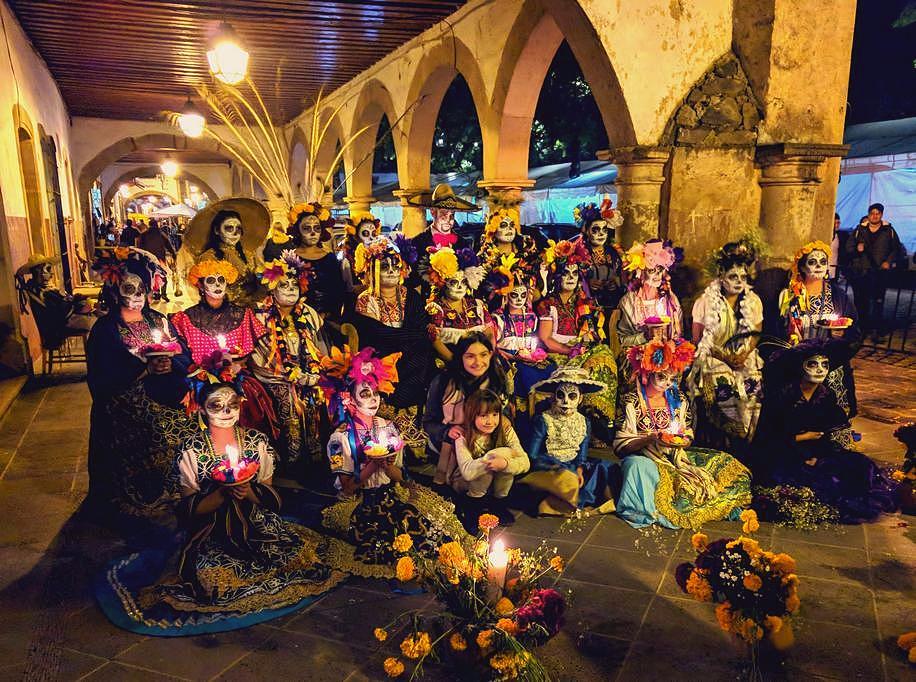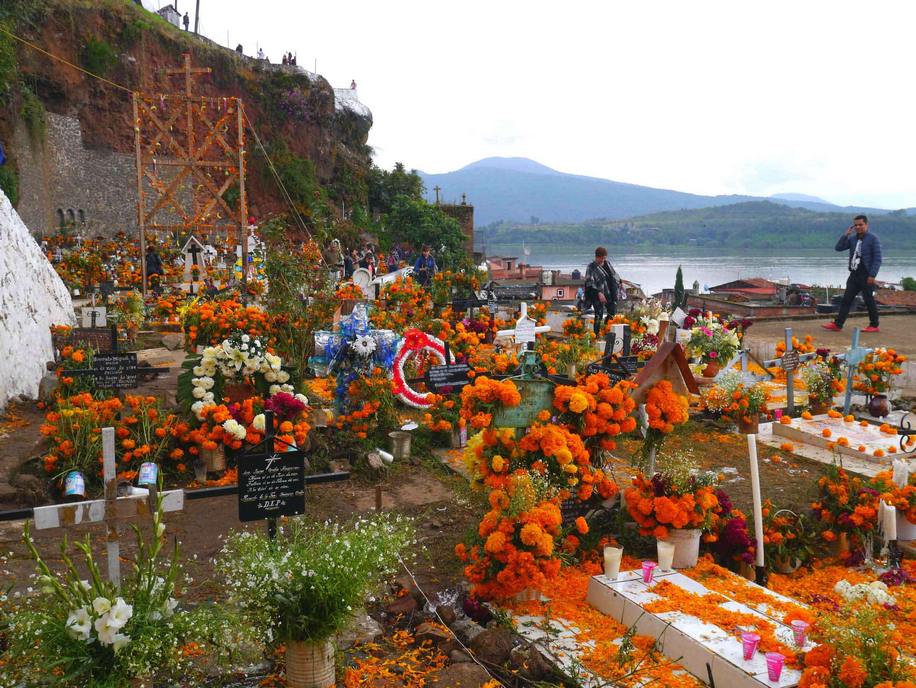Thanks to the many Mexican families who have settled in the United States, we have had a good introduction to Day of the Dead observances. In recent years, we’ve even caught some stateside glimpses of both the pageantry and the solemnity of the occasion. Last fall we decided to go to the roots of this holiday that blends All Souls’ and All Saints’ days in the Christian calendar with pre-Columbian ceremonies connecting the worlds of the living and the dead.
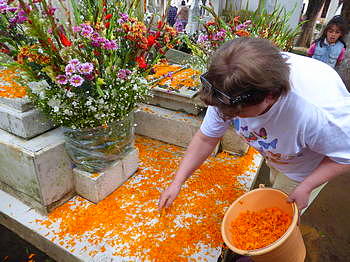 The lakeside mountain community of Pátzcuaro is the most celebrated spot in Mexico for Day of the Dead ceremonies. It is one of what the Mexicans call the pueblas mágicas (magic towns). We joined the throngs who flocked there at the end of October and beginning of November. Fortunately, we had reserved a hotel room in Pátzcuaro far in advance; many travelers end up staying up to an hour away and crowding into town to see the spectacle.
The lakeside mountain community of Pátzcuaro is the most celebrated spot in Mexico for Day of the Dead ceremonies. It is one of what the Mexicans call the pueblas mágicas (magic towns). We joined the throngs who flocked there at the end of October and beginning of November. Fortunately, we had reserved a hotel room in Pátzcuaro far in advance; many travelers end up staying up to an hour away and crowding into town to see the spectacle.
The heart of Día de los Muertos observances are the decorations of family members’ graves with heaps of flowers (mostly marigolds) and objects dear to the deceased. Often those objects are plates of food, beverages, or whole fruit. Apparently, even the dead must eat! The image at the top of the post shows the little cemetery of the fishing community on the island of Janitzio in Lake Pátzcuaro. At right, a woman scatters marigold flowers on all of her family graves. To read more about how moving this part of the observances of Día de los Muertos can be, see Pat’s story in the travel section of the Boston Globe.
The living also feast on Día de los Muertos
Many residents of Pátzcuaro treat Día de los Muertos as a holiday, but not the cooks! People from all over Mexico come to town for the holiday (as do foreign tourist like us), and they are all hungry. Charcoal provides the fuel for these ingenious metal cooking facilities that combine a metal grill around the edges with a well in the middle for frying. This guarantees that food can be cooked at a high enough temperature to be safe to eat. (Water boils at 196°F in Pátzcuaro.)

